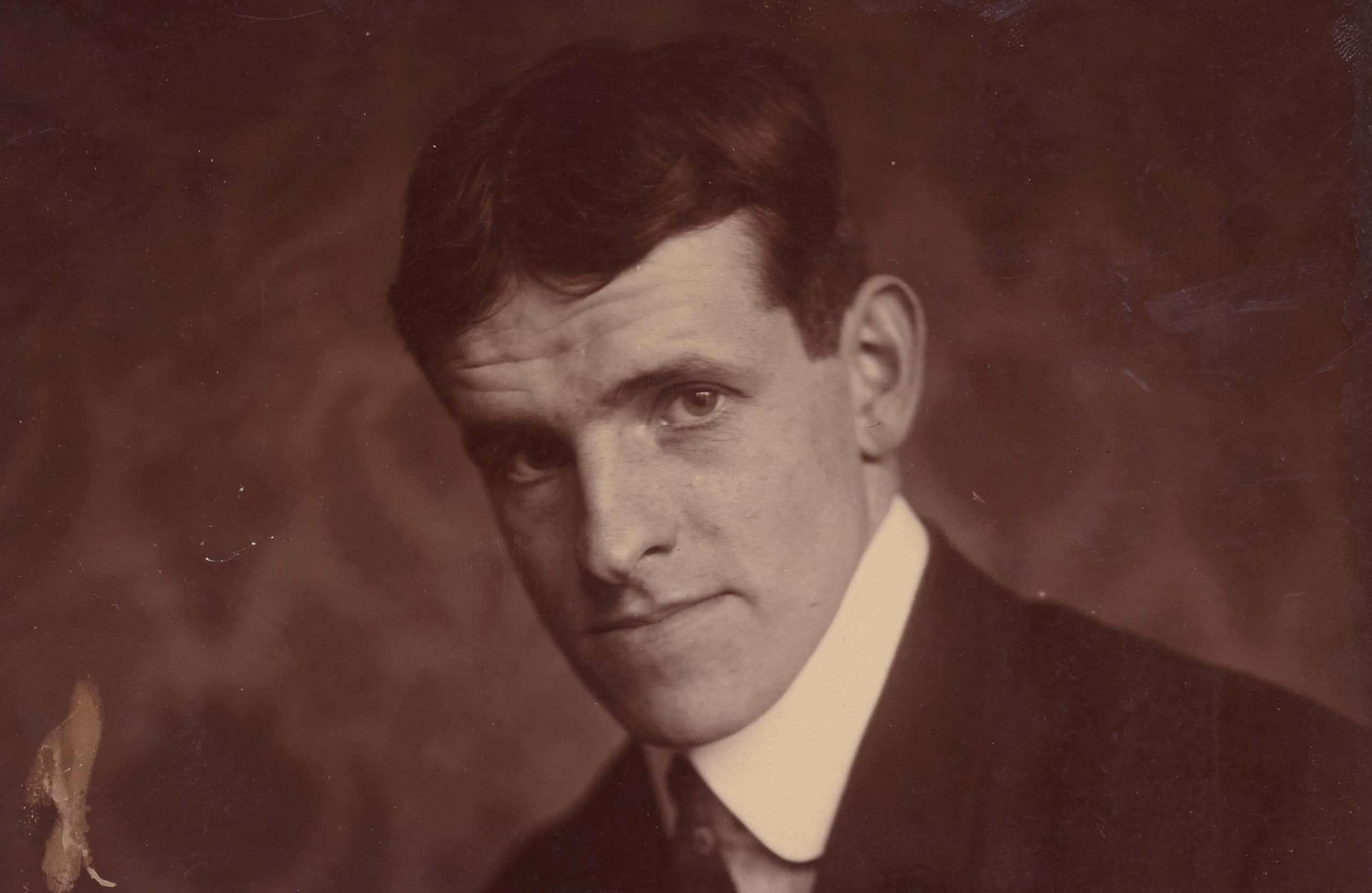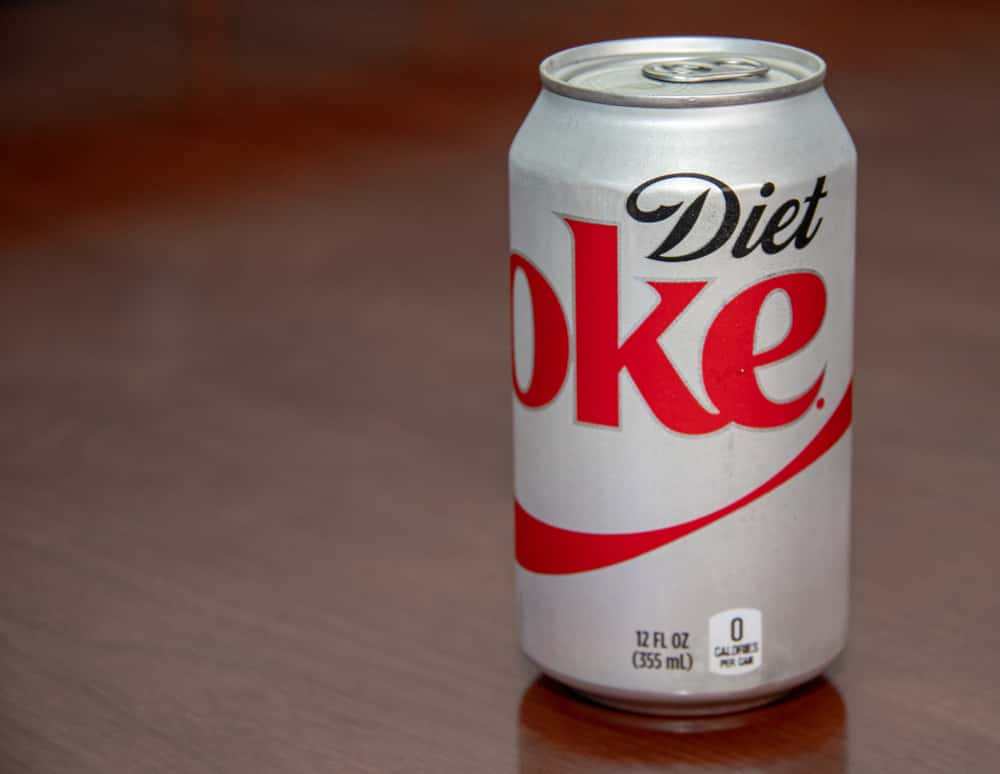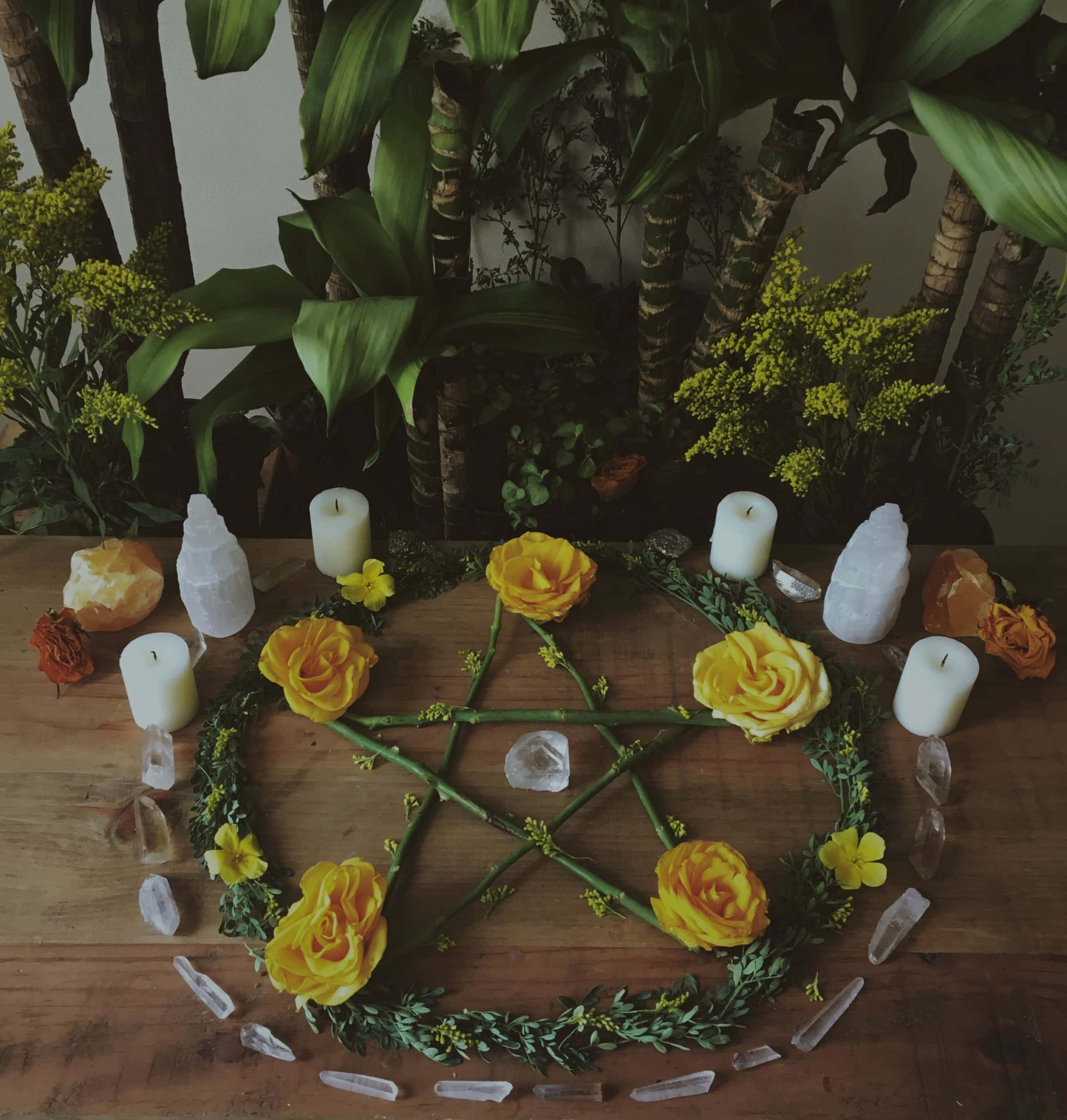“We are all a little weird and life's a little weird, and when we find someone whose weirdness is compatible with ours, we join up with them and fall in mutual weirdness and call it love.”— Dr. Seuss
Ever just stop and think that life and the world are ridiculously weird and creepy sometimes? All the interesting plants, animals, and humans who have graced this planet with their antics throughout the ages have ensured that there's never a dull moment to be had. In fact, I think that the only thing better than experiencing something random happening is knowing about all the random things that go on in this world, if for no other reason than to be able to impress—and scare—others with our mind-boggling knowledge of random and disturbing trivia. With that in mind, here are 27 facts that prove the world is creepier than we could ever imagine.
Creepy World Facts
27. There's Something Fishy
A law still on the books in the UK declares that "it is illegal to handle a salmon in suspicious circumstances."
You laugh, but to live in a society free from nefarious fish-related activity is a blessing we all take for granted. Without rules like this, what would be stopping British society (nay, the WORLD) from slipping into a state of salmon-based anarchy, from which there would be no escape. Let's all take a moment to honor the memory of whichever forward-thinking 18th-century lawmaker took the time to prevent such a disaster. Though his name is lost to time, his memory will live on.
26. Paint It Silver
Ireland’s first Olympic medals were won at the 1924 Paris Games in the disciplines of paintings and literature. Jack Butler Yeats won a silver medal for the painting The Liffey Swim, although the official records indicate that the title of the painting is just Swimming.
25. No Bite Zone
Get this: Iceland has no mosquito population whatsoever. Looking for other guaranteed mosquito-free vacations? There are three other countries that can boast of no mosquitos, and all of them are islands: New Caledonia, French Polynesia, and Seychelles.
24. Around the World in Seven Days
Every week, the escalators in London's Underground Tube travel twice times the Earth’s circumference.
23. Gated Community
The world’s longest fence sits in Australia, and it runs for over 3,488 miles (5,614 kms). Christened the “Dingo Fence,” the structure was originally built in the late 19th century to protect flocks of sheep and to keep dingoes (feral dogs native to Australia) away from the south-east section of the continent.
 Wikipedia
Wikipedia
22. Do Not Go Boldly
In Boulder, Colorado, it is illegal to "roll, throw, or otherwise move any rocks or boulders on any public property" unless you are a city employee "acting within the scope of their employment."
21. Mint Before Soda
In the 1980s, the explosive experiment of Diet Coke and mints used Wint-O-Green Life Savers. By the end of the 1990s, the manufacturer of said candy increased the size of the mints, and they no longer fit through the top of soda bottles. In searching for a substitute, science teachers discovered that Mint Mentos had the same effect.
20. Poison Platypus
Platypuses (Platypi?) are strange-looking little beasties. Actually, let's admit it— they are downright ridiculous.
But maybe we should all be a little less quick to laugh at these little oddballs: after all, beneath their hilarious exterior lurks serious danger...
Each and every platypus is comes equipped with venom strong enough to kill a small dog. The spurs that hold the venom are located on the platypus' feet. The venom is not fatal to humans, but it can cause us swelling and extreme pain.
 Wikimedia.Commons
Wikimedia.Commons
19. Propaganda Piece
If You Love This Planet, a Canadian short documentary film about the dangers posed by nuclear weapons presented by an Australian author, physician, and anti-nuclear advocate, was labeled as "foreign political propaganda" by the US Department of Justice. Planet was awarded an Academy Award for Best Short Documentary despite the attempt at suppression.

History's most fascinating stories and darkest secrets, delivered to your inbox daily.
18. Something Wicca This Way Comes
In 2001, the American Religious Identification Survey by the City University of New York found that Wicca had been America's fastest-growing religion in the previous decade. By 2001 it had 134,000 adherents, while it only had 8,000 in 1990. This means that its practicing believers had increased by over 100%.
17. Rich in Views
At $83,200 a night, the Royal Penthouse Suite at Geneva's Hotel President Wilson clocks in as the most expensive hotel room in the world. The price tag would be exorbitant to most, but the amenities certainly match it: the suite has a dozen bedrooms and a dozen marble bathrooms. The view of the Alps can be seen from a wraparound terrace, and the hotel website also advertises an unparalleled "all-around view of Lake Geneva." As if that weren't enough, the suite includes a Steinway piano, and comes with its own private staff, including a chef, butler, and personal assistant.
16. In Taboo, Out of Sight
In earlier times, disposable pads for women were sold in retail stores in plain boxes. This was meant to keep the purchases as discreet as possible.
It's good to see we've progressed past that sort of unneeded prudishness.
15. Bay of Pigs?
The southernmost beach of Big Major Cay in the Bahamas is home to “Pig Beach,” also known as “Pig Island,” and it's populated by a colony of pigs and piglets that often swim in its clear blue waters. They have become a niche tourist attraction of the Bahamas, and will swim out to oncoming boats in the hopes of being fed.
 Wikipedia
Wikipedia
14. Salt Worship
Over 600 feet underground in Zipaquirá, Colombia is a cathedral build out of the walls of a deserted salt mine. In the 1930s, the space was merely a small altar and sanctuary where salt mine workers would pray at the beginning of their shifts. Construction began in earnest to expand the modest sanctuary in the 1950s, and today it consists of chapels, a basilica dome, and three naves, one of which holds a large, illuminated cross. On Sundays, the Church is open to 3,000 worshippers.
 [/media-credit] Zipaquirá, Colombia
[/media-credit] Zipaquirá, Colombia
Catedral de sal de Zipaquirá
La Mina de Sal de Zipaquirá, una monumental pieza arquitectónica labrada por manos mineras y convertida en un templo de belleza.
Esta portentosa mina de sal se encuentra en el municipio de Zipaquirá, en el departamento de Cundinamarca, a tan sólo 48 kilómetros de Bogotá. Está incrustada en el Cerro del Zipa (jefe máximo indígena), a 2.652 metros de altura.
La explotación de esta mina tiene una historia que recorre tiempos precolombinos, atraviesa los coloniales y republicanos para seguir haciendo historia hoy. Fueron los antiguos indígenas Muiscas quienes primero se beneficiaron de este enorme yacimiento de sal y se convirtieron en una de las sociedades prehispánicas más prósperas de su tiempo.
Esta acumulación salina en medio de la cordillera oriental colombiana se formó hace 70 millones de años cuando aún existía un mar interior que ocupaba toda la región. Al formarse la Cordillera Oriental, ese mar se secó y dejó un enorme depósito de sal sepultado por tierra y barro que se solidificó hasta llegar a la formación de rocas de sal.
El yacimiento de sal ha explotado desde antes de la colonia, por los Muiscas.
Los españoles la declararon “Ciudad de blancos” por decreto virreinal y posteriormente fue la sal la que financió las campañas libertadoras de Nariño y Bolívar que llevaron a la independencia de Colombia, Ecuador, Perú y Venezuela, hace 200 años. Décadas después el escritor y Nobel de literatura Gabriel García Márquez inició su vida en las letras, cuando vivió en Zipaquirá.
Referencia: http://bit.ly/asWXpt
Zipaquira, Cundinamarca, Colombia
Wikimedia.Commons Zipaquirá, Colombia
Catedral de sal de Zipaquirá
La Mina de Sal de Zipaquirá, una monumental pieza arquitectónica labrada por manos mineras y convertida en un templo de belleza.
Esta portentosa mina de sal se encuentra en el municipio de Zipaquirá, en el departamento de Cundinamarca, a tan sólo 48 kilómetros de Bogotá. Está incrustada en el Cerro del Zipa (jefe máximo indígena), a 2.652 metros de altura.
La explotación de esta mina tiene una historia que recorre tiempos precolombinos, atraviesa los coloniales y republicanos para seguir haciendo historia hoy. Fueron los antiguos indígenas Muiscas quienes primero se beneficiaron de este enorme yacimiento de sal y se convirtieron en una de las sociedades prehispánicas más prósperas de su tiempo.
Esta acumulación salina en medio de la cordillera oriental colombiana se formó hace 70 millones de años cuando aún existía un mar interior que ocupaba toda la región. Al formarse la Cordillera Oriental, ese mar se secó y dejó un enorme depósito de sal sepultado por tierra y barro que se solidificó hasta llegar a la formación de rocas de sal.
El yacimiento de sal ha explotado desde antes de la colonia, por los Muiscas.
Los españoles la declararon “Ciudad de blancos” por decreto virreinal y posteriormente fue la sal la que financió las campañas libertadoras de Nariño y Bolívar que llevaron a la independencia de Colombia, Ecuador, Perú y Venezuela, hace 200 años. Décadas después el escritor y Nobel de literatura Gabriel García Márquez inició su vida en las letras, cuando vivió en Zipaquirá.
Referencia: http://bit.ly/asWXpt
Zipaquira, Cundinamarca, Colombia
13. Baby Bonus
On September 12, 2007, workers in Ulyanovsk, Russia were given the day off in a government-sponsored incentive to have couples conceive a child. Coined the “Day of Conception,” couples were offered the incentive of winning a car, cash, or a fridge for having conceived a child, but only if the mother gave birth on June 12, Russia Day. This was the third year in a row in which a day off work was granted for the purpose of conception, and the region's birth rate was on the rise.
12. Lifeguards Off-Duty
In 1985, a man drowned while attending a pool party. Certainly tragic, but also, as it turns out, very ironic. The party was thrown by over 100 New Orleans lifeguards to celebrate their first drowning-free summer swimming season. Jerome Moody, 31, was fully dressed when he fell into the pool, and the lifeguards found him only at the end of the night.
11. Golden State Milestone
California was the first state to criminalize stalking in 1990. The legislation was passed as a reaction to the 1989 murder of actress Rebecca Schaeffer. Schaeffer's stalker shot her in her own front door in Hollywood.
Because of the media attention the crime received, other aspects of the case influenced anti-stalking legislation as well. The Driver's Protection Privacy Act was enacted in 1994 because the private investigator Schaeffer’s killer hired was able to get her address from none other than the regular old DMV.
10. Barcelona Wasn’t Built in a Day
The Sagrada Familia church in Barcelona is taking longer to build than the Egyptian pyramids. It was started in 1882 and is still under construction, which has been delayed due to cash flow issues and the interruption of the Spanish Civil War. The architect has said recently that construction will be complete by 2026.
9. Latte Don’t
Cappuccinos after 11 AM are culturally unacceptable in Italy. Espresso, however, is acceptable for consumption any time of day. Cappuccino is frowned upon after 11 AM due to its milk content: "In Italy, people will look at you very strangely if you have a cappuccino after 11. They absolutely frown upon someone who has a cappuccino after dinner or with a meal, as milk based coffees are reserved for morning and breakfast."
8. Plumbing on High
Since the dawn of time, man has sought to reach greater heights... if only so we can set up a port-a-potty up there, and have ourselves a bowel movement at the top of the world.
So it is with that grand history in mind that we hereby grant France and Italy the shared title of Humanity's Most Ambitious Plumbers. Two of the highest toilets in Europe (and the world) are near the summit of Mont Blanc, which sits on the border of the two countries at an altitude of 4,260 meters.
Yes, the French and Italians may have once found themselves on opposite sides of mankind's most horrific conflict—by which we mean the 2006 World Cup Final (and WWII as well)—but it's inspiring to know that two nations who were once such bitter rivals can put aside the animosity and build toilets together in the end. Who's to say there is no hope for a peaceful world? These grand toilets, these Skyscraping Seats, are a testament to all that is good in the world.
France... Italy... We salute you.
 Wikimedia.Commons
Wikimedia.Commons
7. Maltese Change
Divorce was illegal in Malta until 2011. Six years after the ban on divorces was lifted by a scant 53% majority, it became the European Union’s 15th country to legalize to gay marriage. Also in 2017, it was the first country in Europe to bar the controversial practice of gay conversion therapy.
6. Good as gold?
Today, Olympic gold medals aren’t necessarily worth their weight in gold—with a composition of 92.4% silver and 6.5% copper, they only have about 1% of gold in them. Since the 1912 Olympic games of Stockholm, Sweden, Olympic medals have been gold-plated instead of solid gold.
 Wikimedia.Commons
Wikimedia.Commons
5. Tinker, Tailor, Soldier…Furby?
Furbies, one of the most popular fad toys of the late 90s, were officially banned from the premises of the National Security Agency, the Norfolk Naval Shipyard, and the Pentagon in 1999.
The fuzzy, talking toys were deemed a security risk due to the perception that they could imitate the speech of people they heard and gradually develop their own language. They were essentially banned based on the impression that they could become spies, repeating things said around these highly-secured government buildings once they were brought back to an employee's home.
This ban was implemented and kept despite the statement issued by the president of Tiger Electronics, a division of the Hasbro company, that the ban was based off of “funny yet incorrect rumors.”
4. Stamp! That! Kid!
To save on train fare, parents used to legally ship their children in the United States via the US Postal Service. The first recorded instance was an infant mailed to his grandmother's house just a mile away in 1913. But Edna Neff of Pensacola, Florida was six years old when she was mailed to her father’s home in Christiansburg, Virginia, a whopping 720 miles away. In 1914, the Postmaster General officially banned the mailing of children. To be fair, the children were not wrapped, but carried or walked along the route.
3. Trial by Coffee
Gustav III, crowned King of Sweden in 1771, funded the first documented “randomized clinical trial” in medical history. At the time of the experiment, coffee was illegal to consume in the country of Sweden. It had been since 1746, when Gustav's father signed the “Misuse and Excesses Tea and Coffee Drinking Edict.” The act implemented taxes for use of the illicit drink, including exorbitant fines and confiscation of cups and dishes for coffee drinkers if they did not confess to their usage. Later, the fines turned into a complete ban.
Gustav III ordered a human study on two criminals that happened to be identical twins. He commuted the death penalty for their crime to life imprisonment if they agreed to participate in his experiment. One twin agreed to drink three pots of coffee for the remainder of his life sentence, and the other twin agreed to drink three pots of tea a day for the same amount of time. Two physicians were monitoring their health. Both physicians died before the experiment was completed. Gustav III himself was assassinated in 1792, while both twins lived healthily for a long time. Eventually, the tea-drinking twin died at 83, and the coffee-drinker outlived his twin.
2. Stick It To ‘Em!
Desperation will drive people to the ends of the Earth. Particularly when said desperation comes hand-in-hand with one's family... or the prospect of one's family growing.
Given that, it should hardly come as a shock that pregnancy tests are among the most commonly shoplifted items from retail stores in America. And, given the circumstances, you hardly judge a person for doing what they need to do in order to maintain some order in their lives. After all, if you're struggling to afford a pregnancy test, you're probably in a situation where an unexpected pregnancy is something you need to know about ASAP.
 Pexels
Pexels
1. Mystery at Mayerling
In 1889, the 17-year-old Baroness Marie (Mary) Alexandrine von Vetsera was found apparently shot to death alongside her lover, the married Prince Rudolf of Austria, at their Mayerling country hunting lodge. His shooting partner had gotten worried and broke down the door with an axe, only to find Rudolf slumped at the bed with blood at his mouth. His mistress Marie was lying on the bed, also stone-cold dead. It was an apparent murder-suicide; but to this day, the sequence and chain of events leading up to their deaths remain ambiguous. Although some assumed the prince killed his lover, recently discovered letters from the Baroness to her mother indicate that she was planning to die alongside the prince “out of love.”
The mystery doesn’t end there, however! In 1959, Mary’s remains were inspected. Shockingly, the examining doctor, Gerd Holler, found no bullet hole in her skull, but evidence pointed to death by violent blows to the head. Holler was now obsessed with the case. He went through the archives of the affair and found that only one bullet had ever been fired. As a result, he theorized that Mary died in an accident (perhaps from an abortion), and that Rudolf subsequently shot himself in his grief. The full story, however, goes with them to their graves.
Sources: 1, 2, 3, 4, 5, 6, 7, 8, 9, 10, 11, 12, 13, 14, 15, 16, 17, 18, 19, 20, 21, 22, 23, 24, 25, 26, 27, 28, 29, 30, 31, 32, 33, 34, 35, 36, 37































